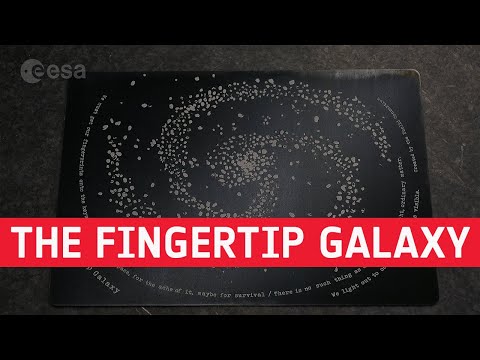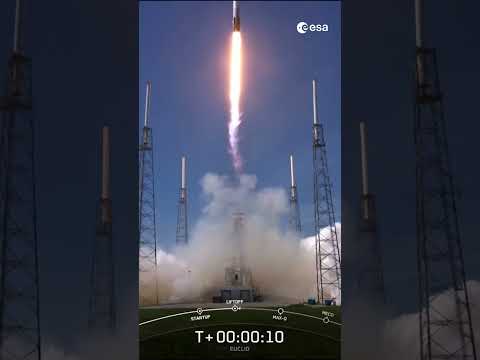Euclid | Ready for launch
ESA’s Euclid space telescope is nearly ready for launch. The spacecraft arrived in Florida on 30 April for final tests and checks, and now being integrated with the SpaceX Falcon 9 rocket that will carry it into space.
For the team at ESA’s European Space Operations Centre (ESOC) in Darmstadt, Germany, this means that the most intense phase of their work is about to begin. To prepare themselves, the team has simulated the launch operations, tackling issues ranging from team members falling ill to a computer mouse being taped over.
Euclid is ESA’s space telescope designed to explore the dark Universe. The mission will create the largest, most accurate 3D map of the Universe ever produced across 10 billion years of cosmic time. Euclid will explore how the Universe has expanded and how large-scale structure is distributed across space and time, revealing more about the role of gravity and the nature of dark energy and dark matter.
Euclid is targeted to launch on a SpaceX Falcon 9 rocket from Cape Canaveral in Florida, USA, at 11:11 local time / 16:11 BST / 17:11 CEST on Saturday 1 July 2023. A back-up launch date of Sunday 2 July 2023 is foreseen.
Credit: ESA – European Space Agency
★ Subscribe: http://bit.ly/ESAsubscribe and click twice on the bell button to receive our notifications.
Check out our full video catalog: http://bit.ly/SpaceInVideos
Follow us on Twitter: http://bit.ly/ESAonTwitter
On Facebook: http://bit.ly/ESAonFacebook
On Instagram: http://bit.ly/ESAonInstagram
On LinkedIn: https://bit.ly/ESAonLinkedIn
On Pinterest: https://bit.ly/ESAonPinterest
On Flickr: http://bit.ly/ESAonFlickr
We are Europe’s gateway to space. Our mission is to shape the development of Europe’s space capability and ensure that investment in space continues to deliver benefits to the citizens of Europe and the world. Check out https://www.esa.int/ to get up to speed on everything space related.
Copyright information about our videos is available here: https://www.esa.int/ESA_Multimedia/Terms_and_Conditions
#ESA
#Euclid
#DarkMatter




 #shorts
#shorts
Best of luck on the launch
Happy Launch Day and all the best to everyone
What if where the universe was created there is a hole where dark energy is constantly pouring expanding the universe,yes! problem solved
problem solved


Thanks ESA. For explaining nothing about the inner workings, because why bother
FUTURE SPACE EXPLOITATION:
Neutron stars, and in particular pulsars, are known for their extreme environments, including high levels of neutron radiation. This radiation can cause damage to electronic devices, and can also make it difficult to control a nuclear reactor in close proximity to the pulsar. As a result, it may not be feasible to use nuclear reactors to generate power in these environments.
However, the high levels of neutron radiation close to a pulsar could potentially create an excellent breeding ground for tritium and deuterium, which are important isotopes for nuclear fusion reactions. One potential approach for harvesting these isotopes is to use AI to collect them using ion engines. While the nature of the propellant can influence the specific impulse (isp), it does not stop the engine from functioning. Therefore, ion engines could be a viable option for collecting tritium and deuterium from a pulsar environment.
To make this approach feasible, it would be important to carefully shield the electronics on the spacecraft from the neutron radiation. Additionally, multiple safety mechanisms would need to be in place to ensure that the spacecraft can be safely controlled and maneuvered. This would require significant planning and execution, but with careful consideration, it could be possible to extract tritium and deuterium from a hazardous environment like a pulsar on a large scale using AI.
In summary, while it may not be feasible to use nuclear reactors in close proximity to pulsars and other neutron stars due to the extremely high levels of neutron radiation, it may still be possible to harvest Deuterium and Tritium from these environments using AI. Ion engines could be a viable option for collecting the fuel, but careful planning and execution would be required to ensure safety and effectiveness. By leveraging the power of AI, we may be able to unlock new sources of fuel and energy that were previously inaccessible due to hazardous environments.
danke an alle mitarbeiter ich verfolge den start und freu mich auf die ergenisse ICH BRENN FÜR ESA / NASA viel erfolg!!!!!!







Just clicked the stream by SpaceX in the right moment since the rocket was about to launch
ESA's doing some really good science these days.
$8 billion . Could have been better spent on poverty in the U.S.